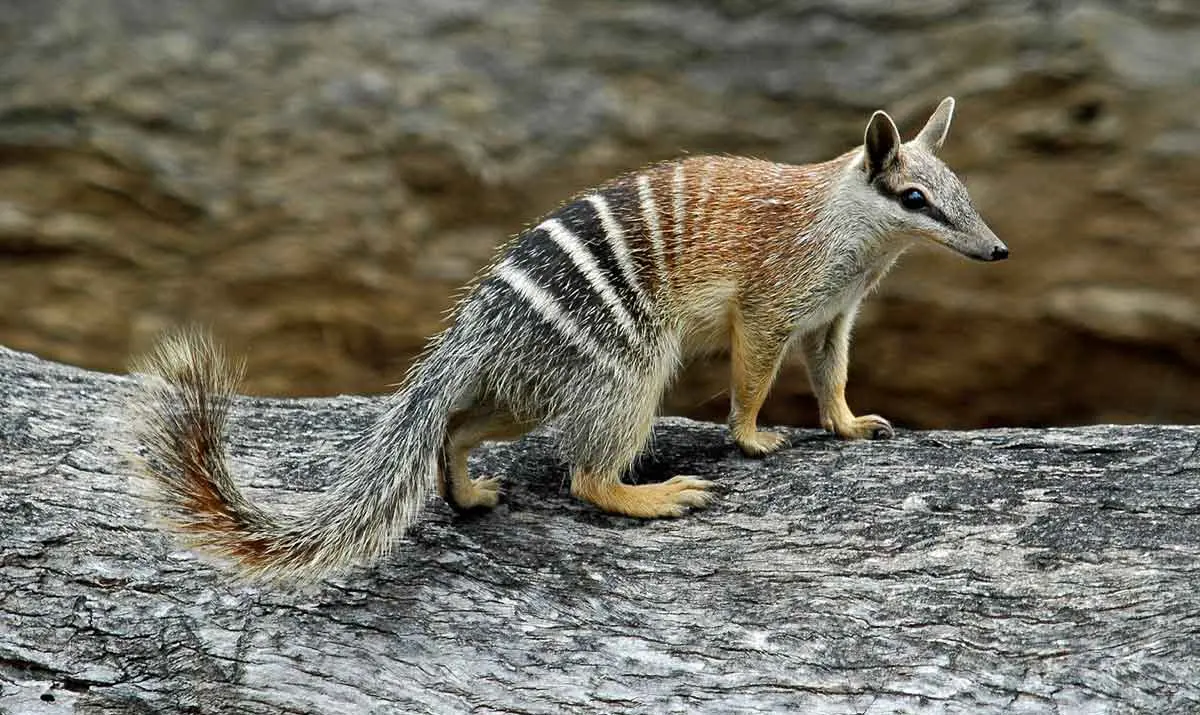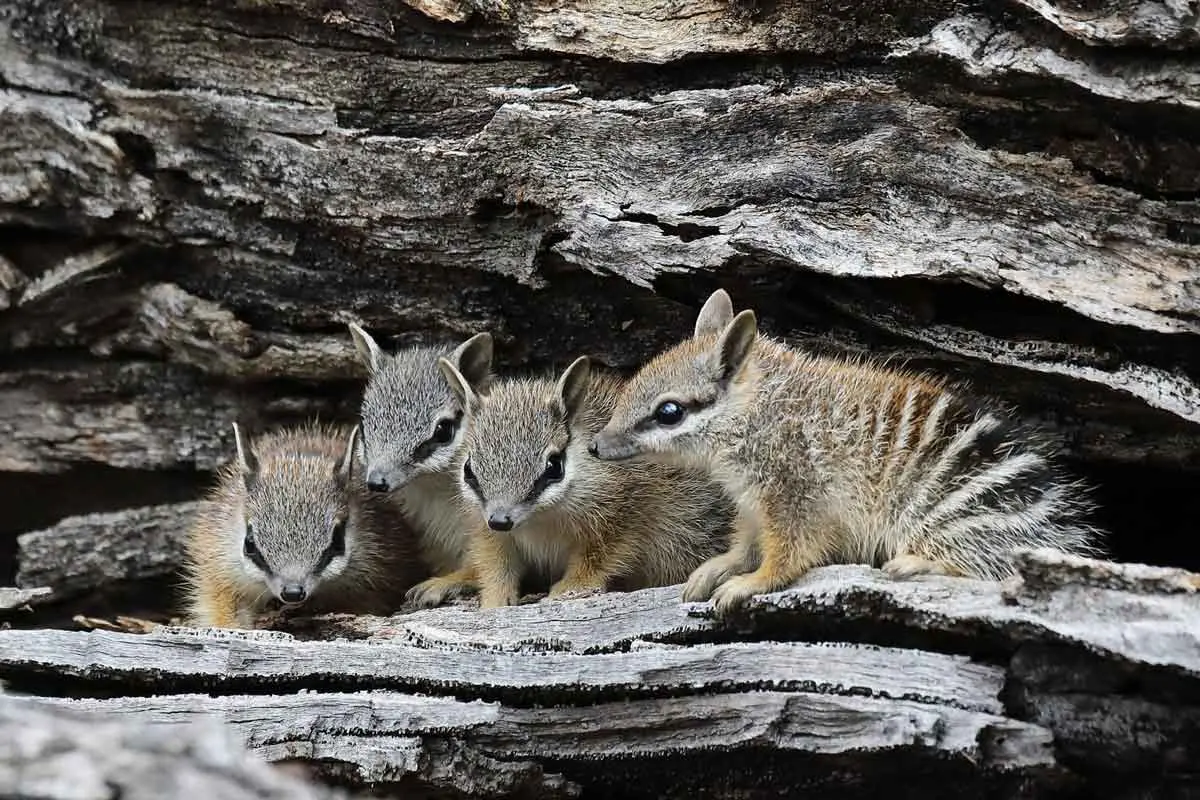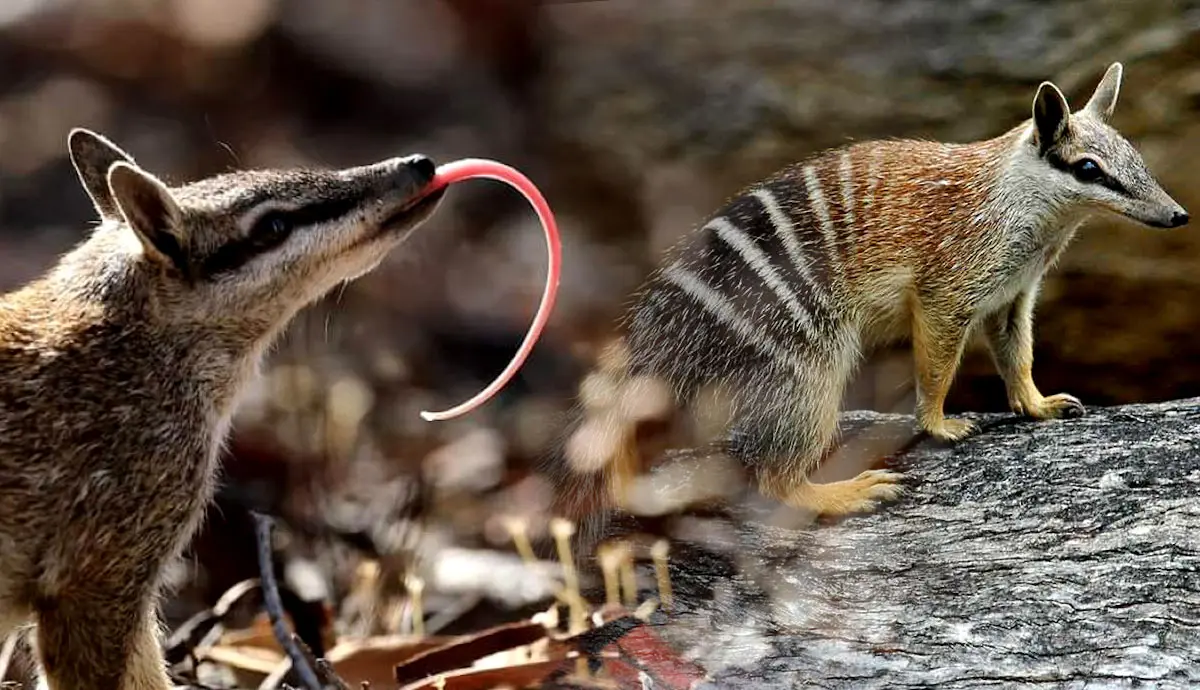For those who’ve never been to Australia, the numbat is probably a creature seldom heard of. With its long tongue and striped coat, this fuzzy creature stands out from the others. Read on to learn more about this fascinating animal.
1. It is Unique Even by Marsupial Standards

The numbat, also known as the walpurti, is the only living member of the family Myrmecobiidae. Very few numbat fossils have been found, and genetic studies suggest that the numbat family split off from other marsupials around 32 to 42 million years ago. Though some sources claim that numbats are the closest living relatives to the now-extinct thylacine (popularly known as the Tasmanian tiger), they are closer to the family Dasyuridae which contains dunnarts, quolls, and the Tasmanian devil. However, the thylacine is still closely related to this lineage.
Though it is a marsupial, it is one of the few to lack a proper pouch and instead sports long underbelly hairs that keep their babies warm and protected.
2. A Numbat can Eat Around 20,000 Termites in a Day

The numbat sports a huge appetite, but only for one type of insect: termites, and lots of them. An individual can devour around 15,000-22,000 termites per day. Numbats sport specialized adaptations relating to their diet. Like other insectivores, this creature sports a long, sticky tongue that it uses to catch any unlucky termites just like an anteater would (which it is unrelated to). Though they’ll drink from puddles or ponds, numbats get most of their moisture from the insects they eat.
Numbats do not have the strength to break open termite mounds and must search for shallower galleries that termites create underground. These marsupials search for termites by scent; after a gallery is found, they dig through the soil or leaf litter with their claws. They then proceed to lap up any termites that cross their paths. No other known marsupials are as specialized in feeding on termites as numbats are.
Due to limited food resources, numbats are solitary and territorial. Both males and females hold territories they defend from others of the same sex; however, territories between males and females may sometimes overlap.
3. It Has the Best Vision out of Any Marsupial

Studies have shown that numbats sport the best eyesight of any known marsupials. Unlike its nocturnal relatives, the numbat is almost strictly active during the day due to its dependence on termites. This puts them at greater risk from predators such as raptors and goannas. Due to this, the numbat has evolved exceptional eyesight that can quickly detect potential threats from their surroundings. Like many other prey animals, the numbat’s eyes are positioned on the sides of their heads to maximize their peripheral vision. While foraging, they are also constantly on the lookout for predators.
The numbat also has exceptional hearing and its distinctive stripes aid in camouflage under vegetation. When threatened, the numbat freezes still in hopes it won’t get detected. If spotted, the numbat will quickly run to the nearest hollow log or burrow to hide and defend itself inside until the predator gives up and leaves.
4. Numbats Have Thinner Fur than Other Marsupials

Due to its diurnal lifestyle, the numbat has evolved thinner fur to help thermoregulate efficiently. Like other marsupials, the numbat’s metabolism doesn’t produce enough energy to create sufficient body heat. Its nocturnal cousins have thicker fur to keep them warm from cold temperatures at night; however, since the numbat is active during the day, having sparser fur allows them to absorb more heat from the hot sun instead.
Their fur also forms a layer of air that helps trap heat. Whenever it needs to cool off, the numbat will raise its hairs to release excess heat in a process known as piloerection (which is very similar to how we get goosebumps).
5. Numbats Need Our Help

Unfortunately, the numbat is listed as Endangered by the IUCN Red List as of 2016. This species was once found throughout Southern Australia but has since been wiped out from around 99% of its historical range. Invasive predators, such as red foxes and feral cats, have contributed to the extermination of many native Australian animals, including numbats.
Habitat destruction from bushfires poses another threat to their survival. Due to climate change, bushfires have become much more frequent and severe. They destroy hollow logs and trees that numbats require to survive, as food sources for termites and as hiding spots to evade predators. Poorly planned prescribed burns meant to counteract bushfires also threaten the numbat's survival.
Conservation organizations work effortlessly to save numbats, as only around a thousand individuals remain in the wild. These animals are difficult to breed in captivity, with the Perth Zoo being the only place in the world to breed them successfully. Some captive-bred numbats have also been reintroduced into protected reserves to increase the wild population. Feral cat and fox removal programs have also been established to eradicate both invasive predators.
Though the numbat is well-known within its range (it is the faunal emblem of Western Australia), many people still don’t know what they are. You can help this adorable animal by raising its awareness among your friends and family. You can also support organizations, such as Project Numbat and the Perth Zoo, that are working towards saving these marsupials from extinction.

